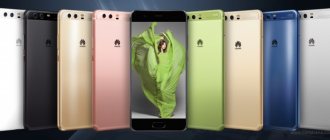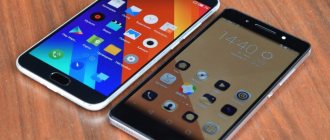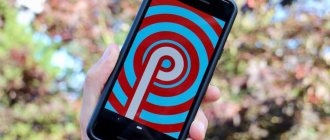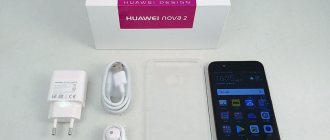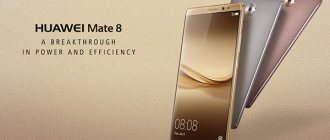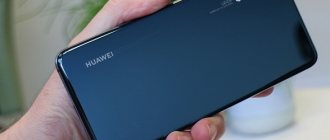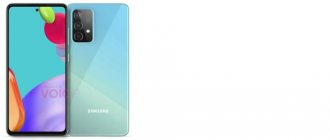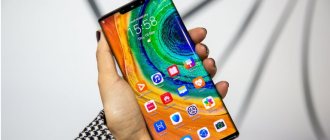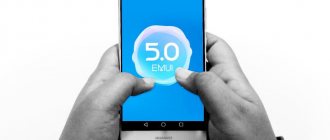Parameters in the table
For ease of comparison of characteristics, it is appropriate to use the table:
| iPhone X | Huawei P20 Pro | |
| Frame | Glass front and back, steel frame | Identically |
| Display |
|
|
| CPU | Apple A11 Bionic (10 nm) + Apple GPU | Hisilicon Kirin 970 (10 nm) + Mali-G72 MP12 |
| Memory | 64 or 256 GB disk + 3 GB RAM | 128 or 256 GB disk + 6 or 8 GB RAM |
| Rear camera |
|
|
| Frontal | 7 MP, f/2.2, focal length 32 mm | 24 MP, f/2, 26 mm |
| Battery | 2716 mAh, fast charging – 50% in 30 minutes | 4000 mAh, fast charging – 58% in 30 minutes |
| Connection | Bluetooth 5.0, Wi-Fi 5 GHz, NFC and Apple Pay | Bluetooth 5.0, Wi-Fi 5 GHz, NFC and Google Pay |
| Peculiarities |
| Waterproof IP67 (1 meter underwater for 30 minutes) |
The differences between smartphones are obvious.
Phone comparison - select the smartphones you want to compare
Comparison - Huawei nova 8 or Apple iPhone 11
Huawei nova 8 is a 2021 smartphone with a weight of 169 g and dimensions of 160.1 x 74.1 x 7.6 mm.
It has a 6.57 inch screen, 64 megapixel camera and 128GB 8GB RAM, 256GB 8GB RAM. Its Hexa-core processor (3×2.22 GHz Cortex-A76 & 3×1.84 GHz Cortex-A55) Apple iPhone 11 is a 2021 smartphone with a weight of 194 g and dimensions of 150.9 x 75.7 x 8.3 mm. It has a 6.1 inch screen, 12 megapixel camera and 64GB 4GB RAM, 128GB 4GB RAM, 256GB 4GB RAM. Its Hexa-core processor (2×2.65 GHz Lightning + 4×1.8 GHz Thunder)
For a detailed comparison of all features, see the table below.
or
| General characteristics | |||
| Make and model | Huawei Nova 8 | Apple iPhone 11 | |
| release date | 2021, August 05 | 2019, September | |
| Dimensions (HxWxD) | 160.1 X 74.1 X 7.6 mm | 150.9 X 75.7 X 8.3 mm | |
| Weight | 169 | 194 | |
| Frame | Glass front and back, aluminum frame (7000 series) | ||
| Colors | Powder Pink | Black, Green, Yellow, Purple, Red, White | |
| Battery | 3800 mAh, Li-Po, Unchangeable | 3110 mAh, Unchangeable, Li-Ion | |
| Battery life | Talk time - Up to 17 hours Audio playback - Up to 65 hours | ||
| Approximate price | 420 EUR | 800 EUR | |
| Display | |||
| Technologies | OLED | IPS LCD | |
| Touch screen | yes, capacitive | yes, capacitive | |
| Color depth | 1B | 16M | |
| Size (Diagonal) | 6.57″ (inches) | 6.1″ (inches) | |
| Screen area | 106.0 cm2 | 90.3 cm2 | |
| Ratio (height:width) | 19.5:9 | 19.5:9 | |
| Ratio (screen:body) | 89.3% | 79.0% | |
| Resolution (pixels) | 1080 x 2340 px | 828 x 1792 px | |
| DPI | 392 PPI | 326 PPI | |
| Screen protection | Scratch-resistant glass, oleophobic coating | ||
| Other | — HDR10 -90Hz -Wide color gamut | — Liquid Retina -625 nits -Dolby Vision -HDR10 -True-tone -Wide color gamut -120 Hz touch-sensing | |
| Cameras and video | |||
| Rear camera, main | 64 MP, Quad camera | 12 MP, Dual camera | |
| Characteristics | -64 MP, f/1.9, 26mm (wide), PDAF -8 MP, f/2.4, 120˚, 17mm (ultra-wide) -2 MP, f/2.4, (for depth measurement) -2 MP, f/2.4, (macro camera) | -12 MP, f/1.8, 26mm (wide), 1/2.55″, 1.4µm, dual pixel PDAF, OIS — 12 MP, f/2.4, 13mm (ultra-wide) | |
| Functions | LED flash, panorama, HDR | quad LED dual-tone flash, HDR (photo/panorama) | |
| Video recording | 4K, 1080p, [email protected] , gyro-EIS | [email protected] /30/60fps, [email protected] /60/120/240fps, HDR, stereo sound rec. | |
| DxOMark main result | 119 | ||
| DxOMark photo result | 129 | ||
| DxOMark video result | 109 | ||
| Front camera, selfie | 32 MP, Single camera | 12 MP, Dual camera | |
| Characteristic | -32 MP, f/2.0, 26mm (wide angle) | -12 MP, f/2.2, 23mm (wide angle) -TOF 3D camera | |
| Functions | HDR | HDR | |
| Characteristic | 4K | [email protected] /30/60fps, [email protected] /60/120fps, gyro-EIS | |
| DxOMark selfie result | 91 | ||
| DxOMark photo result | 92 | ||
| DxOMark video result | 90 | ||
| Productivity | |||
| Operating system (OS) | Android 11, EMUI 12, without Google Play Services | iOS 13, update to iOS 13.2 | |
| Chipset | — Kirin 820E (7nm) | — Apple A13 Bionic (7 nm+) | |
| Central Processing Unit (CPU) | — 6 core (3×2.22 GHz Cortex-A76 + 3×1.84 GHz Cortex-A55) | — 6 core (2×2.65 GHz Lightning + 4×1.8 GHz Thunder) | |
| Graphics Processing Unit (GPU) | — Mali-G57 (6-core) | - Apple GPU (4-core graphics) | |
| External memory card | No | No | |
| Inner memory | 128GB 8GB RAM, 256GB 8GB RAM | 64GB 4GB RAM, 128GB 4GB RAM, 256GB 4GB RAM | |
| Antutu 8 result | 507467 | ||
| Antutu 7 result | 455658 | ||
| GeekBench 5 Single Core result | 1328 | ||
| GeekBench 5 Multi-Core result | 3298 | ||
| GeekBench 4 Single Core result | 5472 | ||
| GeekBench 4 Multi-Core result | 13769 | ||
| Communication and communication | |||
| SIM card | Single SIM (Nano-SIM)Dual SIM (Nano-SIM, dual standby) | One SIM card (Nano-SIM and/or Electronic SIM card) or Dual SIM cards (Nano-SIM, dual standby) - for China | |
| Net | GSM/HSPA/LTE | GSM/CDMA/HSPA/EVDO/LTE | |
| Show all network frequencies: | |||
| Frequencies | -2G - GSM 850 / 900 / 1800 / 1900 - SIM 1 & SIM 2 (dual-SIM model only) -3G - HSDPA 800 / 850 / 900 / 1700(AWS) / 1800 / 1900 / 2100 - SIM 1 & SIM 2 (dual-SIM model only) -4G - 1, 2, 3, 4, 5, 6, 7, 8, 9, 18, 19, 26, 28, 34, 38, 39, 40, 41 - ANG-L22B - SIM 1 & SIM 2 | -2G - GSM 850 / 900 / 1800 / 1900 - SIM 1 & SIM 2 (dual-SIM) - for China CDMA 800 / 1900 -3G - HSDPA 850 / 900 / 1700(AWS) / 1900 / 2100 CDMA2000 1xEV-DO - 4G - LTE band 1(2100), 2(1900), 3(1800), 4(1700/2100), 5(850), 7(2600), 8(900), 11(1500), 12(700) , 13(700), 17(700), 18(800), 19(800), 20(800), 21(1500), 25(1900), 26(850), 28(700), 29(700) , 30(2300), 32(1500), 34(2000), 38(2600), 39(1900), 40(2300), 41(2500), 42(3500), 46(5200), 48, 66( 1700/2100) - A2221 LTE band 1(2100), 2(1900), 3(1800), 4(1700/2100), 5(850), 7(2600), 8(900), 12(700), 13(700), 14(700), 17(700), 18(800), 19(800), 20(800), 25(1900), 26(850), 29(700), 30(2300), 34(2000), 38(2600), 39(1900), 40(2300), 41(2500), 42(3500), 46(5200), 48, 66(1700/2100), 71(600) - A2111 LTE band 1(2100), 2(1900), 3(1800), 4(1700/2100), 5(850), 7(2600), 8(900), 12(700), 13(700), 14 (700), 17(700), 18(800), 19(800), 20(800), 25(1900), 26(850), 29(700), 30(2300), 34(2000), 38 (2600), 39(1900), 40(2300), 41(2500), 42(3500), 46(5200), 48, 66(1700/2100), 71(600) - A2223 | |
| Internet speed | HSPA 42.2/5.76 Mbps, LTE-A, 5G | HSPA 42.2/5.76 Mbps, LTE-A, EV-DO Rev.A 3.1 Mbps | |
| GPRS | Yes | Yes | |
| Edge | Yes | Yes | |
| WiFi | Wi-Fi 802.11 a/b/g/n/ac, dual-band, Wi-Fi Direct, hotspot | Wi-Fi 802.11 a/b/g/n/ac/ax, dual-band, hotspot | |
| GPS | Yes, with A-GPS, GLONASS, BDS, GALILEO, QZSS | Yes, with A-GPS, GLONASS, GALILEO, QZSS | |
| NFC | Yes | Yes | |
| USB | USB Type-C 2.0, USB On-The-Go | 2.0, proprietary reversible connector | |
| Bluetooth | 5.0, A2DP, LE | 5.0, A2DP, LE | |
| Harmful radiation | SAR - 1.09 W/kg (head) 1.18 W/kg (body) SAR EU - 0.95 W/kg (head) 0.99 W/kg (body) | ||
| Music and audio | |||
| Radio | No | No | |
| Headphone jack | No | No | |
| Other | - Active noise reduction with a special microphone - Dolby Atmos sound - Stereo speakers | ||
| Other Additions | |||
| Sensors | — Fingerprint scanner (on-display, optical), accelerometer, gyroscope, proximity sensor, compass | — Face recognition by Face ID, accelerometer, gyroscope, proximity sensor, compass, barometer | |
| Other Addons | — Fast battery charging 66W, 60% for 15 min., 100% for 35 min. -Back loading 5W | - Siri natural language and dictation commands - Fast battery charging 18W: 50% for 30 min. -USB Power Delivery 2.0 -Qi Wireless Charging - Water and dust protection IP68 (up to 2m for 30 min) -Apple Pay (Visa, MasterCard, AMEX certified) | |
| Versions | — Versions: -A2221 (Global market) -A2111 (USA, Canada, Puerto Rico, US Virgin Islands) -A2223 (China, Hong Kong) | ||
Comparison video - not found
Huawei nova 8 vs Apple iPhone 11
Share Share
iPhone X display
And although the screens of the phones are similar, they are still different. “X” is the first phone with an Amoled matrix. Its diagonal is 5.8 inches, resolution is 1125x2436 inches, HDR is supported, and the pixel density is 458 ppi. Plus, the display received TrueTone technology - automatic adjustment of white balance depending on external lighting, which was made possible thanks to a 6-channel light sensor. This makes the picture on the screen pleasant to view in a dark room or in bright sunlight.
Apple also promised the highest brightness of 625 nits and a contrast ratio of 1,000,000:1. It is worth admitting that the promise was kept. Specialists at GSMArena measured the brightness of white color at a backlight level of 100%, the result was 679 cd/m2, which is higher than promised. At the same time, the brightness of black is 0 cd/m2, that is, the black dots do not glow at all, which gives maximum black depth and almost infinite contrast. Yes, the display in the iPhone X is very cool, but this is hardly the merit of the American brand, because the matrices were ordered from the Koreans from Samsung.
Please note that the Samsung Galaxy S8 (at the time of the release of the iPhone X it was the TOP device from Samsung) uses a matrix with a backlight brightness of 440 nits, which makes the Amoled screen of the X the brightest among all Amoleds. A logical question: why don’t the Koreans increase the brightness in their flagships? This may be due to matrix burnout, which is possible when a certain brightness threshold is increased.
Until recently, Amoled screens actually burned out, then they stopped - Samsung learned to increase the brightness to 440 nits without harming the displays. It looks like Apple unwisely increased the brightness to 679 nits in pursuit of glory, and now their displays can burn out - this is evidenced by Apple's warning on the official website. If you have an iPhone X, I recommend not increasing the display brightness above 70%, otherwise there may be a loss of contrast.
Display
The screen sizes of the devices are almost the same: 6.47 inches for the P30 Pro, 6.4 for the Galaxy S10+ and 6.5 for the Xs Max, except that the latter has a flat glass panel, without curves on the sides.
As befits flagship smartphones, all three of our competitors sport bright OLED displays with natural colors and wide viewing angles. All smartphones can be used comfortably even in bright sunshine. However, the iPhone shows the highest brightness with the largest margin - gorgeous displays have always been one of Apple’s main features.
The Huawei P30 Pro display has a 19.5:9 format with a resolution of 2340x1080 pixels and provides a density of 398 pixels per inch. The iPhone Xs Max boasts a resolution of 2688x1242 pixels (19:9 format) at a density of 458 pixels per inch, and the Galaxy S10+ produces a resolution of 3040x1440 pixels (19:9) with a density of 522 pixels per inch. The Chinese flagship is clearly losing, and the Korean one even offers too high a pixel density, which is almost never used except for video. The winner is obvious.
Winner : Apple iPhone Xs Max
Display Huawei P20 Pro
The flagship of the Chinese brand is also equipped with an Amoled display, 6.1 inches, 2240×1080; pixel density – classic 408 ppi. Screen testing results by GSMArena studio:
- The maximum white brightness at 100% backlight is 412 cd/m2.
- Max. black brightness at 100% backlight – 0 cd/m2.
Given that the black dots do not glow, we also get maximum depth and virtually infinite contrast. However, these parameters are valid for manual backlight control mode. When set to Auto mode, the maximum display brightness increases and reaches 582 nits for white and 0 nits for black.
In any case, the P20 Pro's display brightness is lower than that of the iPhone X, although the contrast is at the same level. There is no clear winner, since in Auto mode the Huawei display also perfectly displays content in direct sunlight, plus the reduced backlight brightness is for the better, since the risk of matrix burnout is eliminated.
Batteries and autonomy
Apple smartphones have never been equipped with capacious batteries, but they were successful due to their software and optimization of energy consumption. iPhone X is no exception - the device received a 2716 mAh battery. The same battery is installed in the iPhone 8 Plus.
The kit includes a 5V/1A adapter, which is not capable of charging quickly - from zero to 20% in 30 minutes. The result is not impressive and even disappointing, but the smartphone can be charged faster. So that it works via USB Type-C. To do this, you will need a USB Type-C to Lightning adapter and an adapter from a MacBook or even a Google Pixel 2. Using a fast charging adapter guarantees increased speed - in 30 minutes the phone will charge from zero to 45%, although this is not the fastest charging, considering the that 45% in iPhone X is only 1222 mAh.
Testing of the smartphone by the GSMArena studio showed that the iPhone X on a full charge will provide (the backlight brightness is set to 200 nits, which is equal to 30%):
- 19 hours of calls on a 3G network;
- 9.26 hours of surfing the Internet;
- 12 hours of video playback.
Standard result for smartphones 2017-2019. Considering the battery capacity of 2716 mAh, autonomy is impressive.
Huawei P20 Pro is equipped with a 4000 mAh battery, which is rare in TOP models. When testing autonomy, the following results were obtained:
- 20:56 hours of communication on a 3G network;
- 14:30 surfing the Internet;
- 13:14 hours of video playback.
The display brightness is set to 200 nits – 48.5% of the total backlight brightness. Unlike the iPhone X, the Huawei P20 Pro comes out of the box with a fast charging adapter - with it, the phone charges from 0 to 58% in half an hour, a full cycle lasts 90 minutes. Considering the battery capacity of 4000 mAh, the results are excellent.
Autonomy
In the battery life test, the iPhone clearly loses: the 3174 mAh battery is hardly enough for a full day under heavy load, and it definitely needs to be charged at night. Things are better for Android competitors: the 4100 mAh batteries in the S10+ and the 4200 mAh batteries in the P30 Pro are definitely enough for a day of quiet existence (although it’s better not to take risks here either).
Despite the fact that Samsung's battery is slightly smaller than Huawei's, the phone lasts a little longer. Apparently, the issue is a more energy-efficient processor or a more economical software shell.
Winner : Samsung Galaxy S10+
Performance and processors
The devices use the most powerful chipsets at the time of flagship release. Let's start with Apple - the iPhone X received an Apple A11 Bionic processor with 6 cores and the first video accelerator, which was developed directly by Apple (PowerVR graphics units were previously used). Also, the phone only has 3GB of RAM.
The new A11 Bionic chip uses two powerful Monsoon cores with a frequency of 2.4 GHz, which are 25% more powerful than the previous Hurricane blocks in the Apple A10 Fusion. The chipset also features energy-efficient 2.34 GHz Mistral cores – they are 75% faster than previous low-performance Zephyr units and at the same time have lower power consumption. Plus, the processor uses a 2-core dedicated unit responsible for machine learning, thanks to which the phone performs routine tasks faster.
Testing the iPhone X in popular benchmarks showed the following results.
GeekBench 4.1 (single-core mode)
GeekBench 4.1 (multi-core)
Let's remember the test results: 4256 points in single-core mode; 10215 points – in multi-core. These are amazing results that speak of Apple's success in creating its own graphics video accelerators.
Overall performance is displayed in the Antutu 7 benchmark. The results are obtained from the official Antutu website:
Clearly, the iPhone X is a powerful flagship that remains extremely energy efficient.
Huawei P20 Pro is equipped with SoC Kirin 970, made using 10nm technology. It consists of 8 cores: 4xCortex-A73 2.4 GHz, 4xCortex-A53 1.8 GHz + Mali-G72 MP12. The RAM here is 2 times larger - 6 GB. I’ll add that HiSilicon processors have a weak point - the Mali graphics core, which drags down the fairly technologically advanced Kirin 970. Because of it, the overall speed when working with graphics drops, as evidenced by the test results.
GeekBench 4.1 (single-core mode)
GeekBench 4.1 (multi-core)
Antutu 7
What we see as a result: in Single-Core mode in the GeekBench benchmark, the Kirin 970 is more than 2 times inferior to the Apple A10 Fusion. The lag is reduced in multi-core mode, although there is still a gap between the chipsets. And all because of the Mali video accelerator.
The overall performance displayed in Antutu 7 is strong, but in any case, the winner is the Apple iPhone X.
Cameras
To compare smartphone cameras, materials from the DxOMark website are used. The characteristics of the cameras are indicated in the table above, so there is no point in repeating them. Below are photographs taken under equal lighting conditions, which allows you to compare the quality and capabilities of the phones.
Clickable - pictures open in full resolution:
Huawei P20 Pro
iPhone X
Crops:
Huawei P20 Pro
iPhone X
Crops:
Photo on Huawei P20 Pro. Notice the window at the back without any light.
photo on iPhone X. Demonstration of poor capture of objects from a light source (window)
Crops:
Huawei P20 Pro
iPhone X
There can be no two opinions - the Huawei P20 Pro camera is much better - it demonstrates high detail even in low light, accurate white balance, captures details in dark and light areas of the scene, which indicates a wide dynamic range. I’d especially like to highlight shooting with a blurred background – the P20 Pro provides precise blur, unlike the iPhone X.
Technical specifications
Yes, the P30 Pro has more RAM and a powerful 8-core chip inside, but despite this, the iPhone XS shows better results in tests. Apple's optimization works wonders, iOS flies on it, applications open literally at the speed of thought. And it will be like this for another couple of years.
Everything also works great on the P30 Pro, however, we don’t know how long it will last and how long the device will receive support.
Winner : iPhone XS .
